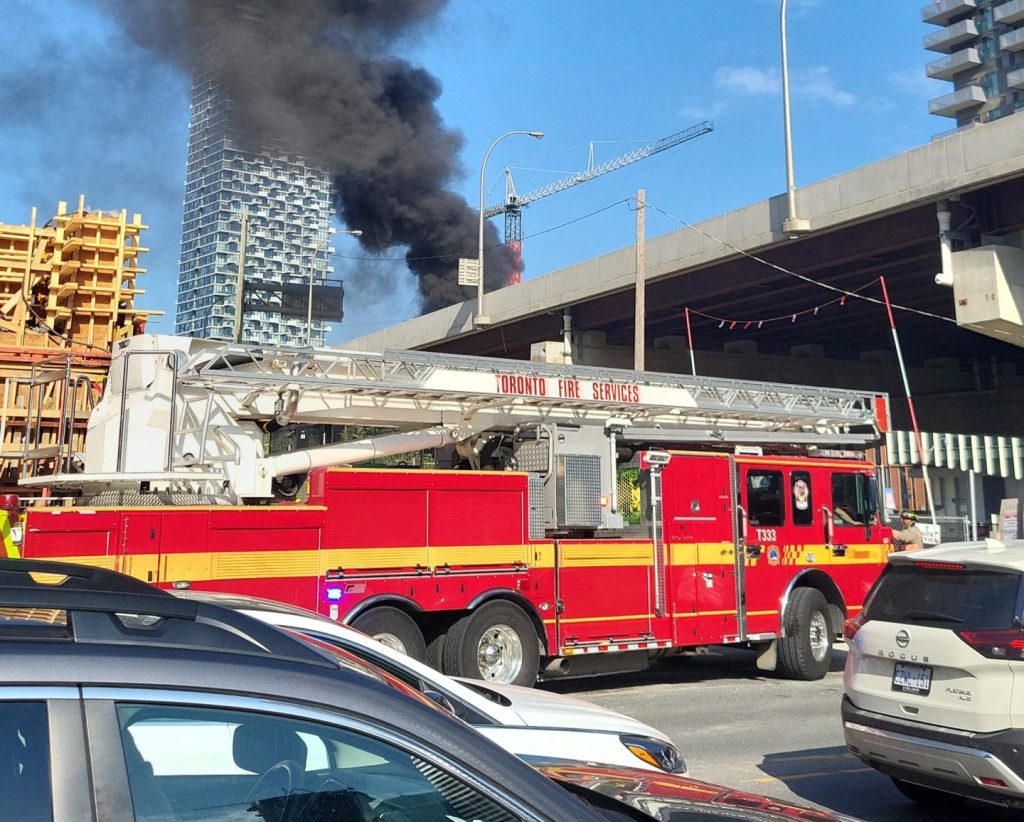With cases surging and new contact tracing policies, what happened to the COVID Alert app?

Posted December 24, 2021 7:14 am.
When it comes to battling a countrywide surge in COVID-19 cases fuelled by the Omicron variant, questions are being raised on social media about the current state and lack of recent usage of the COVID Alert app.
“Canada’s COVID Alert app says ‘I’m all set!’ even though I know many people with COVID have been around me in the last week,” Twitter user Lee Dale posted on Thursday.
Meanwhile, there have been several other messages posted on the platform asking who is using the app.
“Is anyone actually using the Government of Canada’s COVID Alert App? Has anyone received an alert on the app? Seems with such a high positivity count more people’s phones would/should be going off,” Lois K. McKenzie-Thornton tweeted on Wednesday.
The COVID Alert app uses Bluetooth to anonymously exchange random codes between a user’s phone and nearby phones. Unveiled in mid-2020, officials promoted using the app to help people track exposures.
Alex Beattie, a spokesperson with Health Canada, told CityNews in a statement nearly 3.1 million phones across Canada were running the app during the month of November even though there have been more than 6.7 million app downloads to date.
RELATED: UW researchers develop new program to improve COVID Alert app
But when it came to people who tested positive for COVID-19 inputting the one-time key to warn others they may have been exposed to the virus, it was done just 869 times during all of November. Beattie said updated figures for December will be gathered early in 2022.
For context, there were nearly 18,900 new confirmed cases in Ontario alone between Nov. 1 and Dec. 1.
“The Government of Canada still recommends the use of COVID Alert even for individuals who have been vaccinated. With the uncertainties around variants and as we learn more about vaccines, the app continues to be a useful tool in the fight against COVID-19,” Beattie said.
The questions about the app come at a time when Ontario’s public health units are shifting contact tracing strategies as staff deal with soaring cases and potential exposures.
According to a statement from a Toronto Public Health spokesperson on Tuesday, the department is focusing on prioritizing the investigation of cases stemming from high-risk settings such as schools, hospitals and shelters and working to minimize outbreaks in the affecting settings. However, it said more than 900 public health staff members are assigned to manage cases and conduct follow-ups.
In Kingston, the local public health unit said in a statement on Thursday that not all people who test positive for COVID-19 will receive a call to follow-up since resources are being redirected to provide vaccinations.
“KFL&A Public Health is using a combination of approaches including text messaging and our provincial workforce. Individuals may receive a phone call from an unrecognized number. We encourage anyone who has recently tested to answer calls and respond to text messages,” it said.
In the absence of being contacted, residents were encouraged to notify all close contacts and “encourage” them to isolate for 10 days.
RELATED: Ontario sees highest ever daily COVID-19 case count
Meanwhile, officials in Ottawa said on the City’s website the escalating number of cases means “high-risk contacts will not receive a call from [Ottawa Public Health] at this time.” However, people who test positive for COVID-19 were told to expect a call from a case manager within “a few days” of getting PCR test results.
Dr. Anna Banerji, a professor with the University of Toronto’s Temerty Faculty of Medicine and an expert in testing and contact tracing, said when it comes to the COVID Alert app, a problem is that there are feelings it has limitations.
“I think the app has certain limited utility and people perceive it as not having a lot of utility because so many people are not using it,” she said, adding with the Omicron variant spreading so rapidly it should be sending notifications on a more regular basis.
When it comes to the shift in contact tracing strategy, Banerji said it’s understandable to focus on higher-risk settings given staffing challenges.
“At this point, because it’s so infectious and the rates are going up so quickly, I’m not sure it’s the best use of contact tracers’ time,” she said.
Heading into the new year as Ontario experiences record-high new daily cases, Banerji reiterated public health messaging to restrict movements as best as possible and upgrade masks and face coverings.
Canada’s COVID Alert app says “I’m all set!” even though I know many people with COVID have been around me in the last week. pic.twitter.com/bFxpJKOF0P
— Lee Dale (@leedaleyyz) December 23, 2021
Is anyone actually using the Government of Canada’s COVID Alert App? Has anyone received an alert on the app? Seems with such a high positivity count more people’s phones would/should be going off. ????
— Lois K. McKenzie-Thornton (@ThorntonLois) December 22, 2021
Does anyone actually use that COVID alert app? Is that still a thing?
— Allison Jardim Gonsalves (@allisonjardim) December 23, 2021
https://twitter.com/KevinPayneDACH/status/1474024573943402504?s=20
@VOCMOpenline whatever happened to to the COVID Alert App. I would think with all of these cases happening contact tracing would be much easier. I haven’t heard this app in the news for months.
— Ross Craig (@rosscraig) December 23, 2021
https://twitter.com/MikeLemayNB/status/1473976486629621763?s=20
COVID Alert app? It’s still active but they’ve stopped promoting it. Never really caught on as a useful tool from what I gather.
— Peter F. Jackson ???????? ???????????? (@pjackson_nl) December 22, 2021








